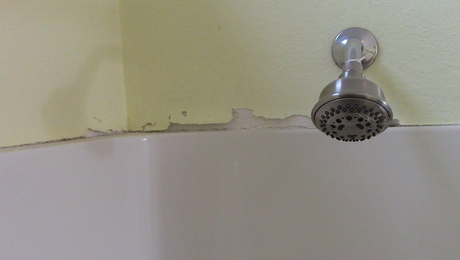Hello to all–I’m usually over on knots, as I am a furniture designer/builder, but I have a cleint who is interested in exterior doors for their house.
As I have not built large heavy doors in the past, I am looking for some advice as to what woods and construction techniques would be advisable.
I am in Minnesota, and the doors will be going to a house in the mountians in Colorado. The design has not been finalized as of yet, but will probably be a multi panel with some sort of smaller “peep door” opening in the top.
What types of woods would be good for that environment? I was leaning towards QSWO. Would that be a good choice? Also, as far as construction goes, are floating tennons the way to go? Is titebond III a good choice for glue? How big does a tennon have to be?
I have lots of experience mainkg cabinet doors, but I am unsure of how wider tennons will transfer to larger style doors.
Thanksa in advance for all advice.
Peter



















Replies
I am not from Colorado , but quartersawn white oak would be a good choice in almost any exterior enviorment. The tenons can be two smaller ones instead of one wide tenon.I am not sure what the best glue would be, I would tend to use a long open time exterior glue. Boat builders can clue you in. Maybe the best thing is to contact a couple of door manufacturers for what glue they use.
mike
Guy I know here who has made many expensive doors over many years, does his stiles and rails as glueups.
A "stave core" glueup of white pine or poplar is edged with species, 3/8 thickness at outer, thickness at inside depending on cope pattern. Resawn "veneers" at 1/8 thickness are laminated to faces. He uses a vacuum bag press.
Stile-rail joints are cope and stick, then doweled using 1/2 dia sticks. The joint at the top hingeside corner gets as many as can be reasonably packed in, while others get two to three.
A lot of the doors got made with mahogany to the outside, and a second species to the inside. Mahogany is one of the best exterior woods. This guy always does bookmatched panels, and I would recommend it.
And yes, Titebond III is good. If you make the whole thing including sill and frame, then you should shop-finish it, or at least coat the top and bottom edges.
For weatherstripping, the best source is found here: http://www.conservationtechnology.com
View Image
"A stripe is just as real as a dadgummed flower."
Gene Davis 1920-1985
good woods for that are the QS WO, CVGF, or Mohagany.
I would want to make any door parts of resawn and reglued members to relieve the pressures and avoid movement.
The TBIII is your best glue for this, IMO.
Best joint would be a blind tneon, but that can be very time consuming. The floating tenons are probably fine. dowel tenons easiest and cheapest, but that mtn CO air stays relatively dry so not as much moisture movement as some places.
There is however a very large differential of interior/exterior moisture and temperature. account for that in your contract and methods as much as you can. High elevation UV rays are very hard on finishes and wood when not in a protected location such as under a porch roof.
Welcome to the
Taunton University of Knowledge FHB Campus at Breaktime.
where ...
Excellence is its own reward!
You should inquire as to the exposure of the doors. A door with a good overhang over it and not positioned so it gets a lot of direct sun will hold up pretty well, but a wood door with no overhang and lots of direct sun can be toast in months.
And understand that in any case an exterior door is subjected to some pretty extreme conditions, with warm humid air on one side and cold dry air on the other. This creates considerable stress.
Also, in Colorado the doors will need some insulating value. A plain panel door isn't going to provide that.